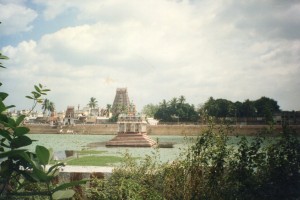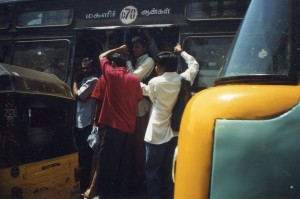Things seem to happen on a cosmic scale in India. While living just outside Chennai in 1996, I routinely got up around 6 AM, and walked outside the dormitory towards the showers. It was late summer, and temperatures rocketed during the day.
At 6 AM the weather was already warm. The air was still and the neighborhood was quiet. The area was rustic. Most homes had thatched roofs and dirt floors. This time is considered ideal for meditating–night becomes day and both are equally balanced. Things are still, like the original unity that the universe emanated from.
But it was already hotter when I finished my shower. Sweat began to drip from my temples and the back of my neck as I strolled back to the dorm. High-pitched nasal voices of female singers now emanated from radios of the local farmers. Pariah dogs barked and cows mooed.
It felt hotter every 30 minutes. By noon, the sun reigned in full majesty. The road teamed with motorcycles, cars, donkey-pulled carts, pedestrians, cows, dogs, goats and smoke belching trucks and buses.
Smells mixed truck exhaust, animal dung and spices–concoctions that are probably burned into my brain for the rest of my life. The neighborhood now bustled with all of nature’s life forms. The energy that the universe came from flowed in maximum abundance.
So the morning felt like a microcosm of creation. You begin immersed in the peace and unity before the universe’s energies emanated and condensed into the things we can see. This state was called avyakta in ancient times. You then become part of a huge river of life. This projection of the universe was called shrishti. Avyakta and shrishti occur in enormously long cycles. This idea of cycles of creation and dissolution happening over very long periods of time became established at least 2,000 years ago. A cool thing is, you can feel this ancient thought pattern in the day’s bustle.
We’ll see a way that this orientation to the vast and cosmic was reinforced in Life in Traditional India Part Two.



Comments on this entry are closed.